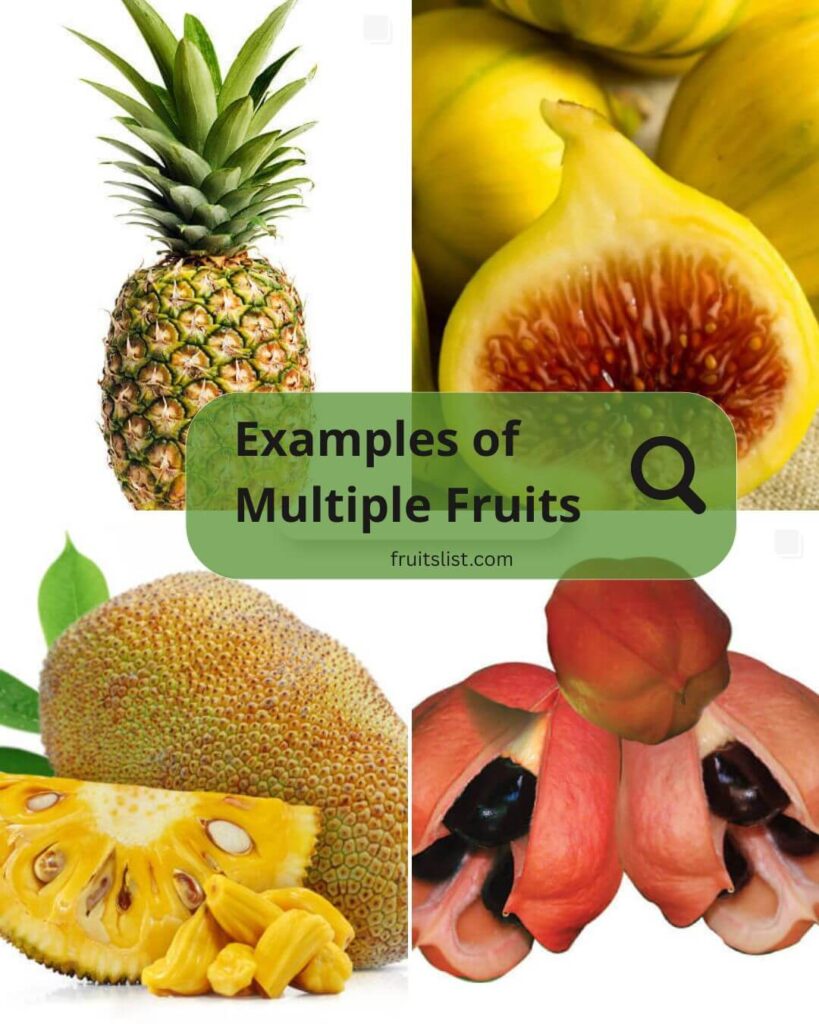
Most fruits usually come from a single flower — one flower produces one fruit. But multiple fruits work a little differently. They are formed from a whole bunch of flowers that grow close together in a cluster, called an inflorescence. Each flower in that cluster makes its own little fruit, but instead of staying separate, they all merge and grow into one big mass. That big mass is what we call a multiple fruit.
A pineapple is a great example — every little “eye” you see on it started as an individual flower. Over time, they all fused together to make the single fruit we eat. The same goes for figs, jackfruits, and mulberries.
There are two main kinds of multiple fruits:
- Syconus – where the flowers are tucked inside a hollow structure that later turns fleshy, like in figs.
- Sorosis – where the flowers grow along a central stem and fuse together into a solid mass, like in jackfruit or pineapple.
In simple terms: multiple fruits are what you get when a team of flowers works together to produce one big fruit instead of many small ones.
To give you a clearer picture of multiple fruits, here are 17 familiar examples, along with explanations of why they qualify as multiple fruits and a few interesting details about each.
1. Pineapple
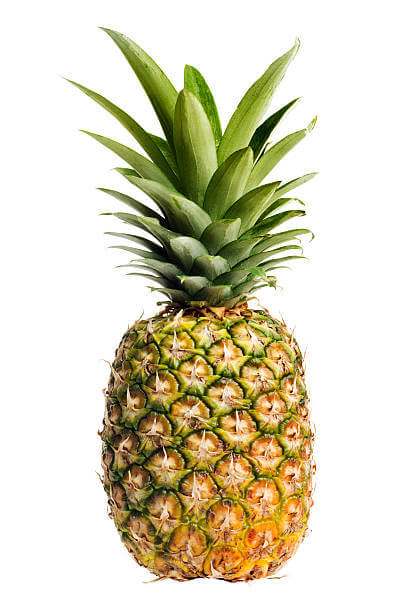
A pineapple is one of the clearest examples of a multiple fruit. Each little hexagonal “eye” on the skin started as a separate flower, and as the fruit developed, all those individual ovaries fused together into one big tropical fruit. This fusion gives pineapple its rough, patterned surface. Beyond its botany, pineapple is enjoyed worldwide—eaten fresh, canned, or even baked into desserts—making it both a fascinating plant and a global favorite.
2. Jackfruit
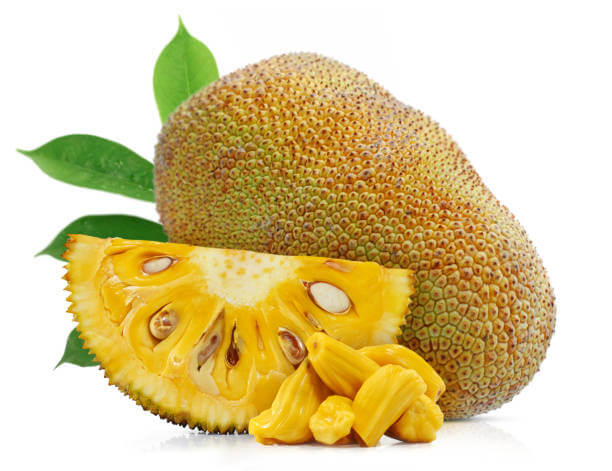
Jackfruit is the next excellent example of a multiple fruit because it develops from dozens of flowers clustered along a single stalk. Over time, the ovaries of those flowers merge into one enormous, spiny fruit—the largest fruit that grows on a tree. Inside, the sweet or starchy yellow bulbs can be eaten fresh, cooked, or used in desserts depending on the variety.
3. Breadfruit
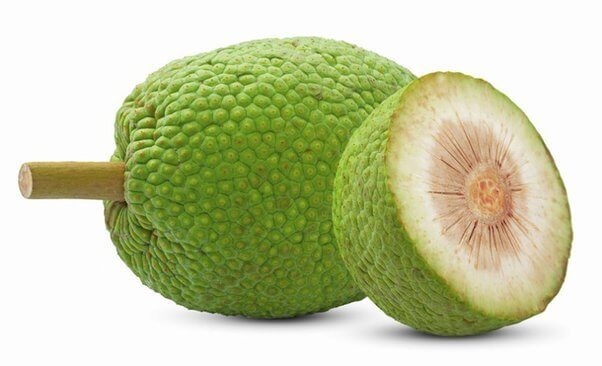
Breadfruit forms when many tiny flowers fuse together, with both the ovaries and surrounding tissues blending into a starchy round fruit. This makes it a classic multiple fruit. Traditionally grown in tropical regions, breadfruit is valued as a staple food for its versatility and resilience. Depending on the variety, some fruits are seeded while others are not. Steamed, baked, or fried, it has long been a dependable food source across the Pacific, Asia, and beyond.
4. Osage Orange
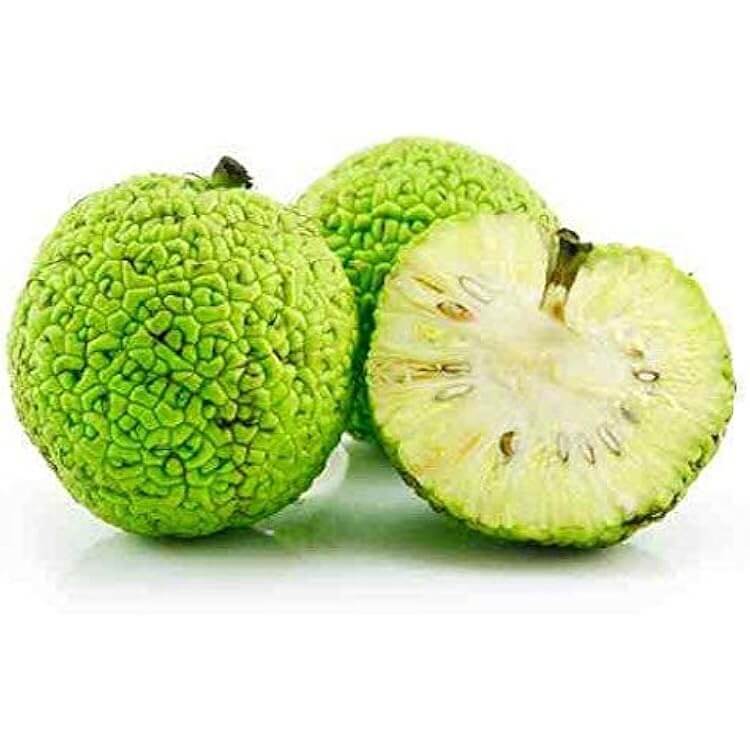
The Osage orange is unmistakable—its large, wrinkled, brain-like surface is actually made from the ovaries of many small flowers that have fused together. This process creates one rough, green, spherical multiple fruit, often bigger than a human fist. The fruit contains a milky sap that can irritate skin, but its unusual look and clustered flower origin make it botanically fascinating. It is not edible.
5. Fig

The fig is a special type of multiple fruit known as a syconium. Instead of forming on the outside, its many tiny flowers grow inside a hollow, fleshy chamber. As they mature, the flowers fuse into one sweet, soft fruit. This hidden cluster makes the fig unique among multiple fruits. It has been cultivated for thousands of years and enjoyed fresh, dried, or even brewed, all while showing how many flowers can unite into one unusual structure.
6. Mulberry
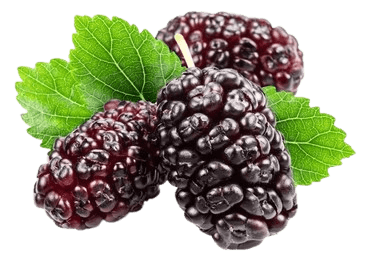
Every little bead on a mulberry comes from an individual flower that once grew in a catkin cluster. As the flowers ripen together, they merge into a single, elongated fruit. That’s why mulberries are considered multiple fruits—the final berry is really a whole collection of fused fruits.
7. Soursop
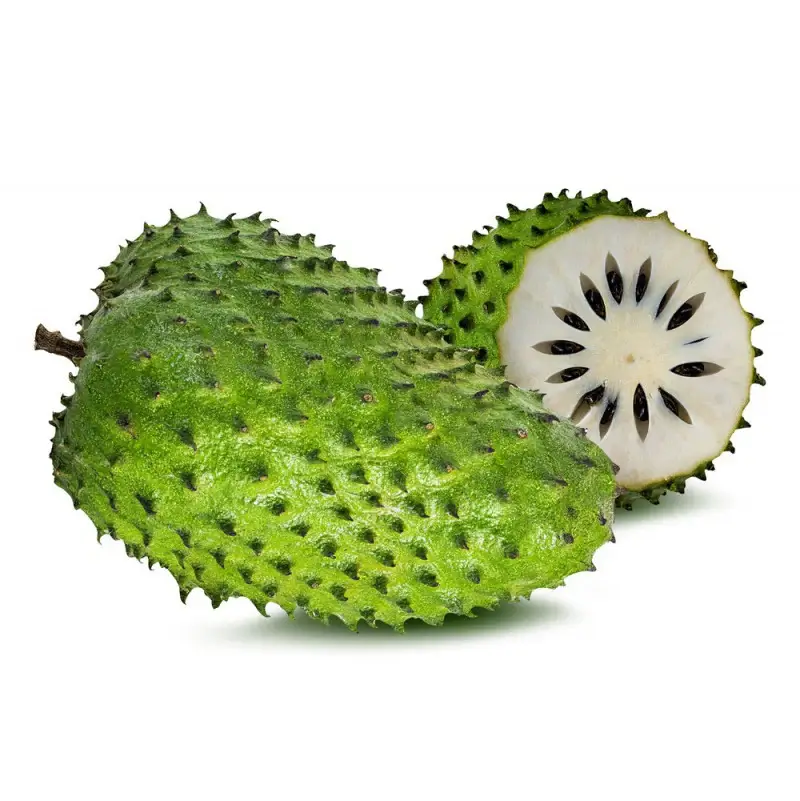
Soursop develops when many flowers fuse into one prickly, green fruit. The ovaries of these flowers combine, producing a soft, white pulp inside that’s rich in flavor. This blending of several flowers into one mass is what makes it a multiple fruit. Beyond its structure, soursop is loved for its sweet yet tangy flesh, and it is often turned into drinks, desserts, and frozen treats across tropical regions.
8. Noni Fruit
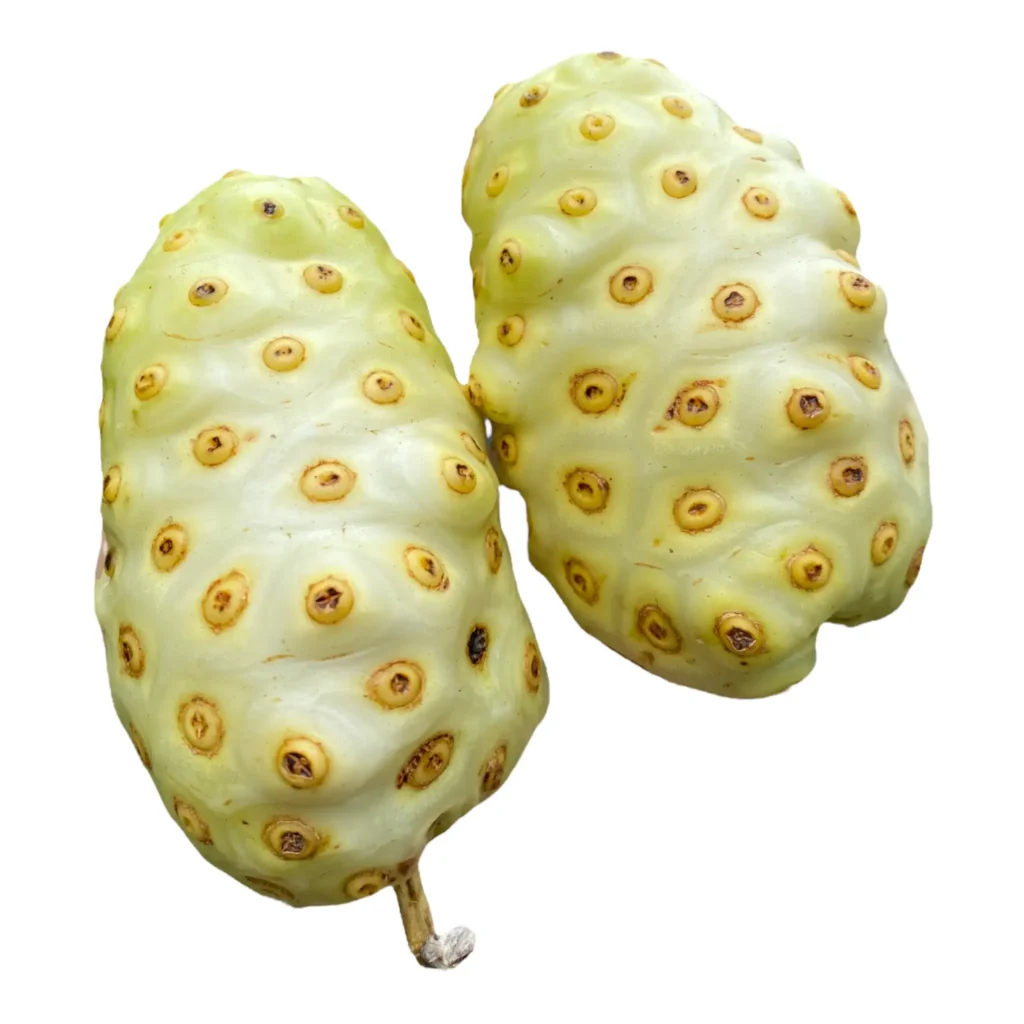
Noni fruit forms when clusters of small flowers unite into a single, bumpy fruit. This irregular shape comes directly from its multiple-flower origin. Though it’s not eaten for taste—its strong smell has earned it the nickname “cheese fruit”—noni has long been valued for medicinal uses.
9. Custard Apple (Annona reticulata)
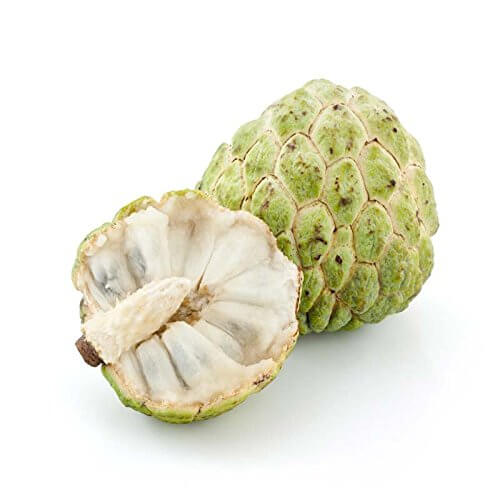
The custard apple is a multiple fruit formed when several flowers fuse into one soft, quilted-looking body. Each flower contributes to the creamy, sweet pulp inside, giving the fruit its custard-like texture and flavor. Known as sugar apple or bullock’s-heart in some regions, it is rich in vitamin C and natural sugars.
10. Marang (Artocarpus odoratissimus)
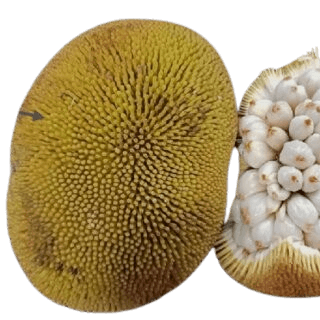
Marang, a tropical relative of jackfruit, develops when numerous flowers fuse into a long, spiny fruit. Each flower’s ovary contributes to the soft, sweet pulp within, making it a true multiple fruit. The fruit is highly fragrant and often described as tastier and more delicate than jackfruit or chempedak.
11. Chempedak (Artocarpus integer)
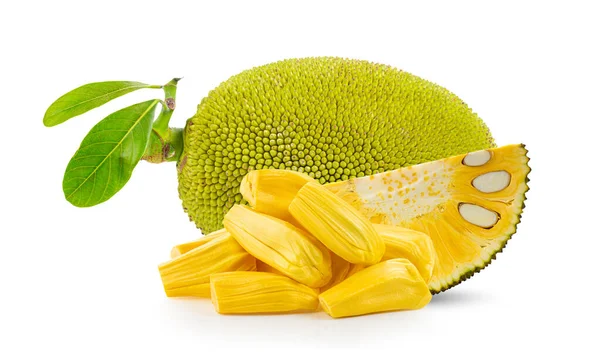
Chempedak forms as many tiny flowers merge into one large, cylindrical or spherical fruit, much like jackfruit. This fusion of clustered ovaries creates its multiple fruit structure. Its leathery, pentagon-patterned rind hides sweet, aromatic pulp that is widely enjoyed in Southeast Asia.
12. Lakoocha (Monkey Jack)

Lakoocha, or monkey jack, is another member of the Artocarpus family. Its multiple fruit arises from the fusion of clustered flowers whose ovaries combine into one edible body. The result is a fleshy, tangy fruit often eaten fresh or used for medicinal purposes.
13. Pulasan

Pulasan produces its rambutan-like fruit when many flowers fuse into one spiny, red body. The merging of these flowers forms the leathery rind and juicy flesh, making it a classic multiple fruit. Its sweet, seed-filled pulp resembles rambutan but is considered less acidic and more intensely flavored.
14. Ackee
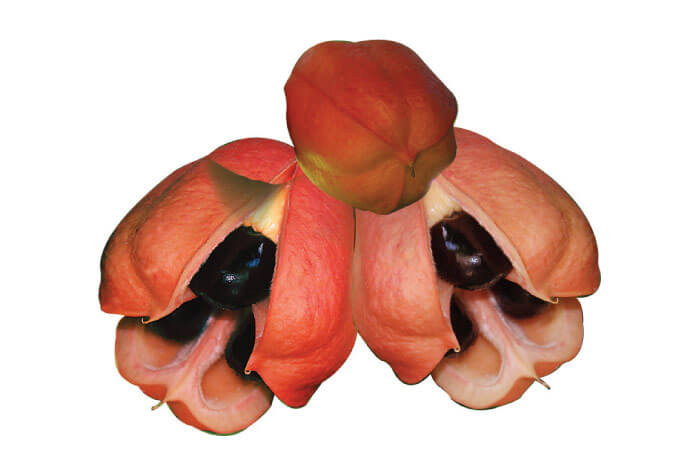
Ackee develops from fused flowers within an inflorescence, creating a multiple fruit that opens to reveal its edible arils. Each fleshy segment originates from the ovaries of separate flowers that matured together. Once cooked, the arils are smooth, creamy, and highly valued in Caribbean cuisine, particularly in Jamaica.
15. Monkey Puzzle Tree Fruit
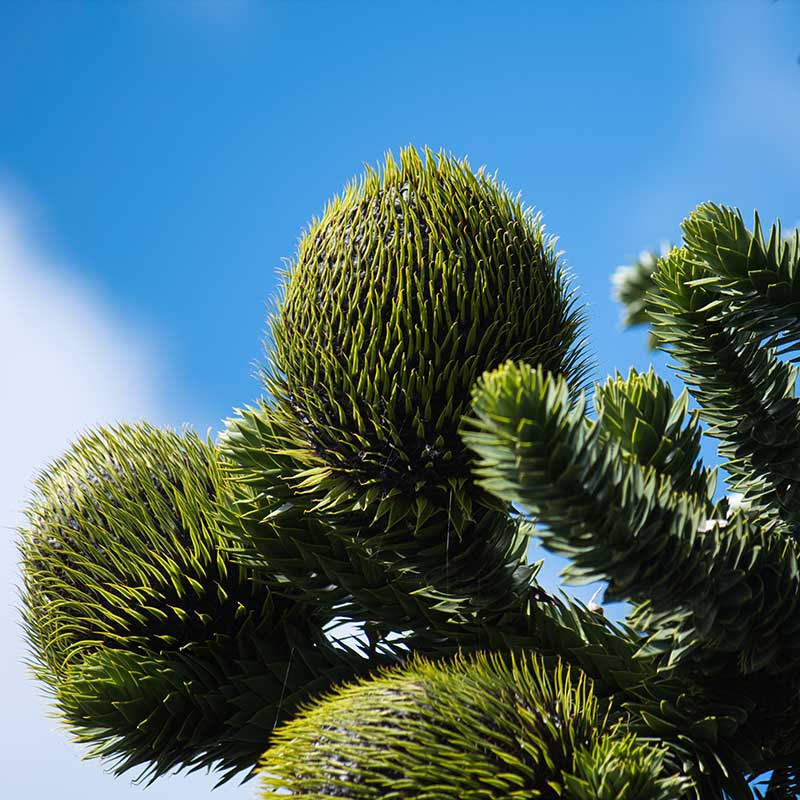
The female cones of the monkey puzzle tree are large, spherical structures made from many seed-bearing units fused together. This blending of floral parts creates a cone-like multiple fruit. Inside, the fruit holds hundreds of edible, nut-like seeds that are released when the cone disintegrates.
16. Pandanus (Screw Pine)
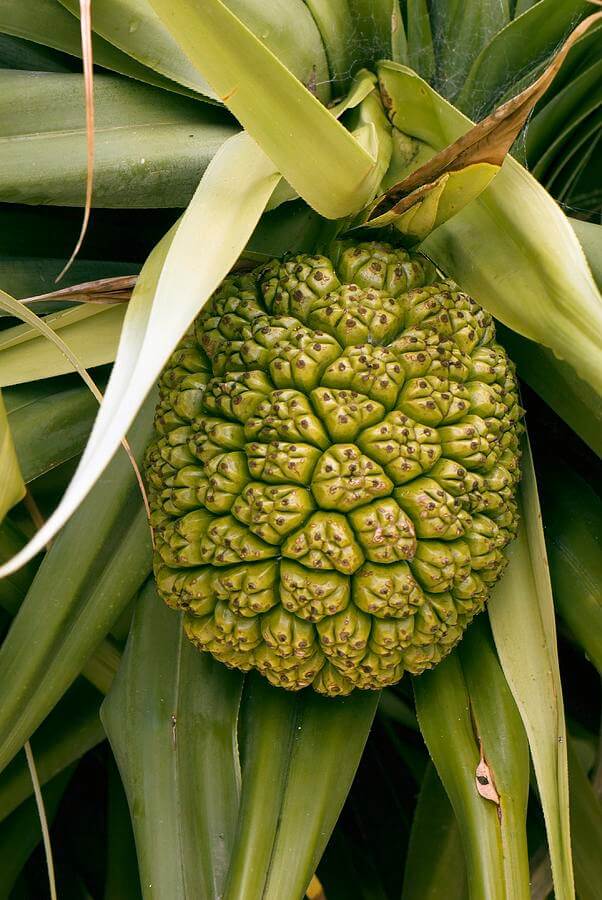
Pandanus produces large, ball-shaped fruit heads made up of many phalanges—units that develop when flowers fuse into a single mass. These clusters qualify it as a multiple fruit. The fruits can float due to air spaces inside, which helps them disperse across oceans. Birds and bats also spread their seeds, making pandanus a vital coastal plant throughout Asia, Africa, and Oceania.
17. Plane Tree Fruit
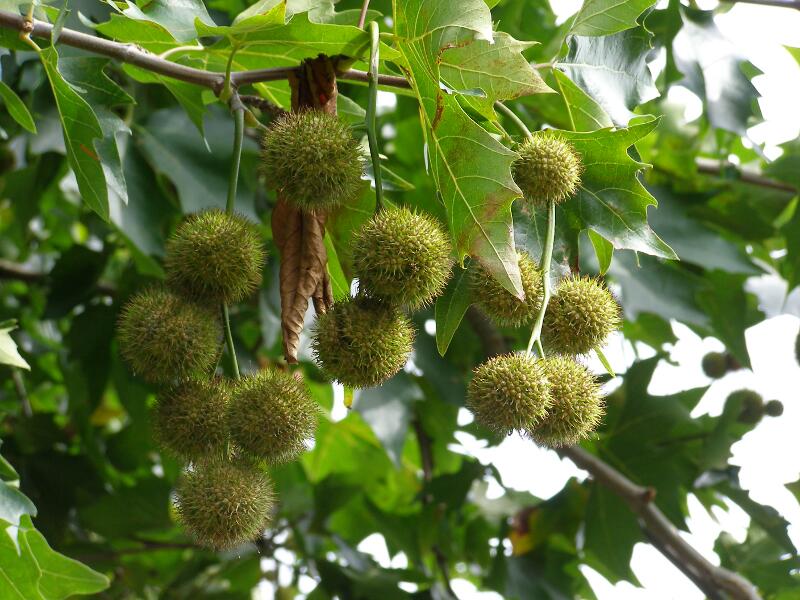
Finally, the plane tree forms multiple fruits in the shape of round, spiky balls. Each ball is a cluster of many small achenes—tiny fruits with single seeds—that develop from a flower head and stay bound together. These balls can hold hundreds of achenes, which later disperse by wind.
Discover Other Fruit Category Examples:
- Examples of Dehiscent Fruits
- Examples of Schizocarp Fruits
- Examples of Sorosis Fruits
- Examples of Accessory Fruits
- Examples of Follicle Fruits
- Examples of Pome Fruits
- Examples of Drupe Fruits
- Examples of Stone Fruits
- Examples of Capsule Fruits
- Examples of Aggregate Fruits
- Examples of Achene Fruits
- Examples of Fleshy Fruits
